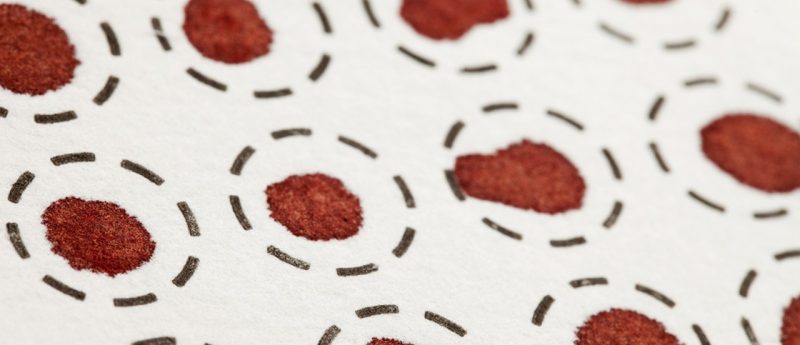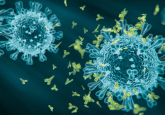Measuring electrical conductivity – a new approach to dry blood spot analysis

Researchers from the University of Texas Arlington (UTA; TX, USA) have developed a new method to analyze the amount of blood present in dry blood spot samples. The method, which is based on measuring electrical conductivity, was recently described in Analytical Chemistry.
Dry blood spot analysis is routinely used in neonatal screening for metabolic disorders. It has also proven to be an effective approach in diagnosing HIV infection.
The procedure usually involves drawing out a few drops of blood from the finger or heel onto a filter paper, which is then left to air dry and sent for analysis to a laboratory.
Researchers at UTA led by Purnendu Dasgupta, Hamish Small Chair in Ion Analysis, UTA’s Department of Chemistry and Biochemistry, have developed a new analytical method of measuring dry blood spot samples using electrical conductivity.
“Our new method, which involves using an electrode probe to measure electrical conductivity, has proven accurate to within one percent,” stated Dasgupta from UTA’s Department of Chemistry and Biochemistry.
“It also has the considerable advantage of using up none of the sample where the currently preferred approach uses around half the sample.”
Dry blood spot is an economical technique and is particularly effective in developing countries due to its ease. Existing methods of analysis measuring the amount of blood present in dry blood spot analysis involve measuring sodium levels.
The team demonstrated that measuring electrical conductivity was an effective way to precisely measure the amount of blood present in dry blood spot samples, compared with the existing method of measuring sodium levels.
The researchers demonstrated the technique by collecting dried blood spot samples from 12 volunteers. They took 3 millimeter circular punches from each sample and dissolved them in a mixture of water and methanol.
Using a dip probe electrode they then measured the electrical conductivity of the samples. They were able to accurately measure the amount of blood to within 1%.
“As analytical instrumentation has improved, dry blood spot analysis is becoming increasingly popular for clinical trials to monitor the effects of therapeutic drugs and for large-scale epidemiology and genetic studies, where it is vital to know the exact amount of blood in the sample,” said Dasgupta.
“Our new dip probe method offers clear advantages, but it does have the same problem as measuring sodium in that it does not function if the subject has abnormal electrolyte levels, which happens in some diseases,” he added.
The chair of UTA’s Department of Chemistry and Biochemistry, Frederick MacDonnell, commented: “In line with UTA’s focus on health and the human condition within the Strategic Plan 2020: Bold Solutions | Global Impact, Dr. Dasgupta and his colleagues have made an important contribution around the increasingly popular blood testing method of dry blood spot analysis.
“While more research needs to be done, they have demonstrated that measuring conductivity is a viable alternative to measuring sodium and has some specific advantages over the current approach.”
Sources: Kadjo AF, Stamos BN, Shelor CP, Berg JM, Blount BC, Dasgupta PK. Evaluation of Amount of Blood in Dry Blood Spots: Ring-Disk Electrode Conductometry. Analytical Chemistry 88(12), 6531–6537 (2016); http://www.uta.edu/news/releases/2016/07/Dasgupta%20Blood%20Spots.php






